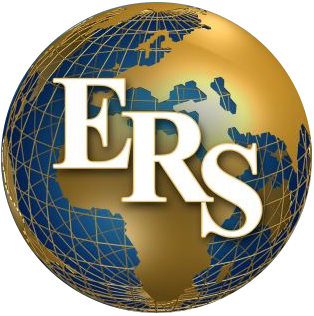Employee Retirement Services, L.L.C. Let's Plan Your Retirement Together — Call today (956) 440-8774
403(b) FAQs
What is a 403(b) plan?
What are the advantages of Traditional and Roth contributions to a 403(b) plan?
Which employees must be included in the employer’s 403(b) plan?
What are the contribution limits for a 403(b) plan?
Are loans from the 403(b) plan allowed?
How can I select the eligibility, contribution and loan features of my organization’s 403(b) plan?"
What is “Universal Availability”?
What is ERISA, and what types of organizations can be subject to ERISA with regard to their 403(b) plans? "
What is a fiduciary, and when do fiduciary responsibilities apply?"
What is a 403(b) plan?
To add a new question go to aA 403(b) plan, also known as a tax-sheltered annuity (TSA) plan, is a retirement plan for certain employees of public schools, 501(c)(3) tax-exempt organizations and churches. Individual accounts in a 403(b) plan can consist of an annuity contract, which is provided through an assurance company, or a custodial account, which is invested in mutual funds. Employee Retirement Services offers both types of investments.pp settings and press "Manage Questions" button.
What are the advantages of Traditional and Roth contributions to a 403(b) plan?
A 403(b) plan usually has two options: Traditional and Roth contributions. With a Traditional account, a participant’s gross salary is reduced by the amount of the pre-tax contributions, deferring federal (and, in most states, state) income taxes. Earnings will not be taxed until withdrawal. With a Roth Account, participant contributions are subject to federal and, where applicable, state income taxes before they go into the plan but participants will not pay taxes on the earnings when they make a qualified withdrawal. Roth accounts are ideal for employees who expect to be in a higher tax bracket in retirement, and prefer to be taxed now in their lower bracket.
Which employees must be included in the employer’s 403(b) plan?
In terms of employee salary reductions (the voluntary contributions made by the employee to their account), employers must generally include all employees, with no waiting period or age requirement, who normally work 20 or more hours per week and who plan to contribute more than $200 per year to their account. Churches and qualified church controlled organizations are not subject to these requirements.
For employer contributions made in ERISA plans, generally all employees must be included after one year of service and attainment of age 21(nonprofits), or age 26 (education employers) if there is no vesting schedule. “One year of service” is generally defined as a year in which the employee worked 1,000 hours or more. If employer contributions are totally vested from the first deposit, inclusion can be delayed to two years of service or upon attainment of age 21.
Note: Leased employees are not eligible to participate in an employer’s 403(b) plan. Also, unique to public schools is the role of members of the governing board. In some locations, school board members are compensated with W-2 reported income. This might lead to the conclusion that those school board members are eligible to participate in the 403(b) plan, but this is not the case because elected officials are not eligible unless the office held requires a background in education, such as the superintendent of public instruction.
What are the contribution limits for a 403(b) plan?
The combination of employer contributions and employee salary reduction contributions cannot exceed the lesser of 100% of includible compensation or $52,000 in 2014. Employee salary reduction contributions are limited to $17,500 in 2014 (plus $5,500 for age 50+ employees). The age 50+ catch up contribution made by the employee does NOT count against the $52,000 limit. Employees with 15+ years of service with the same employer may be eligible to contribute an additional $3,000, if the employer is an educational organization, hospital, religious organization, health and welfare agency, or home health service agency.
Are loans from the 403(b) plan allowed?
Loans can be allowed at the employer’s discretion. Participants can borrow (subject to the loan terms under the account held) the greater of one-half of the vested account values or $10,000 in non-ERISA plans. In an ERISA plan, the limitation is 50% of the vested values capped at $50,000, minus the difference between the highest outstanding loan balance in all plans of the employer in the previous 12 months, and the amount still outstanding when a new loan is taken.
How can I select the eligibility, contribution and loan features of my organization’s 403(b) plan?
This can be addressed through your plan document and Employee Retirement Services can help.
What is “Universal Availability”?
The universal availability rule means that if an employer permits one employee to defer salary into a 403(b) plan, the employer must extend this offer to all employees of the organization. However, certain employees may be excluded from the plan, including:
Employees who will contribute $200 annually or less
Those employees who participate in a 401(k) or 457 plan, or in another 403(b) plan
Non-resident aliens
*Employees who normally work less than 20 hours per week (interpreted in the regulations as 1,000 hours per year)
Students performing services described in section 3121(b)(10) of the IRS code
*Caution is urged in the use of this exclusion since the IRS has reported frequent violations when employees are excluded based on hours worked because, if one employee working less than 1,000 hours in prior years is permitted to participate, then all employees working less than 1,000 hours must have been permitted to do so. A mistake in this area may lead to the entire 403(b) plan losing its tax deferred status.
What is ERISA, and what types of organizations can be subject to ERISA with regard to their 403(b) plans?
The Employee Retirement Income Security Act of 1974 (ERISA) protects the retirement assets of Americans by implementing rules that qualified plans and 403(b) plans must follow to protect the benefits of participants and beneficiaries.
Public school districts, governmental organizations, churches, church-controlled organizations or 414(e) religious organizations, are not subject to ERISA. (Note that churches and other religious organizations can make an election to be an ERISA 403(b) plan, however such elections are rare). They are also exempt from the nondiscrimination rules for non-elective contributions to their 403(b) plans. All other 501(c)(3) nonprofit employers are subject to ERISA when employer contributions are made to the plan.
What is a fiduciary, and when do fiduciary responsibilities apply?
In plans covered under Title I of ERISA, the plans sponsor, including members of the Board of Directors, is always a fiduciary. So are:
Members of the investment committee
The plan administrator named in the plan document
Investment managers
And, in limited circumstances when investment advice is being provided, the financial advisor
For public education institutions, since ERISA does not apply, and fiduciary responsibilities can only be applied through state statute. In general, state statutes tend to apply fiduciary responsibilities under state trust law which generally does not apply to 403(b) assets (because those assets are not required to be held in trust). Public education employers should consult legal counsel to become familiar with statutes in their won state, and potentially guard against taking actions that might cause the employer to assume a fiduciary role. The IRS 403(b) regulations, generally effective on January 1, 2009, did not impose any fiduciary responsibilities, only compliance responsibilities.
For 501(c)(3) nonprofit employers sponsoring voluntary (elective) 403(b) plans that qualify for the DOL Safe Harbor exemption from ERISA, the fiduciary responsibilities imposed by ERISA would not apply. However, if the nonprofit sponsors an ERISA 403(b) plan or a 401(k) plan in addition to their 403(b), they are subject to ERISA and will automatically be fiduciaries and will need to understand those responsibilities.
Many charter schools hold a 501(c)(3) designation but are also a part of the public school district (with oversight from a state governmental agency such as the Department of Education). Is this type of charter school subject to ERISA coverage? When charter schools are part of the public education system, they too are exempt from ERISA for their retirement plans. As is true of all public education employers, these charter schools are also exempt from nondiscrimination rules. The only nondiscrimination requirement applicable to them is the universal availability requirement applicable only to employee elective deferrals. However, charter schools should take care to firmly establish whether the school is, in fact, a part of the public education system of that state.
For ERISA 403(b) plans, new 5500 reporting requirements in 2009 require plan asset data to be reported, much like for 401(k) plans. How much data do I need to include? Field Assistance Bulletin 2009-2 has provided relief by permitting ERISA plan sponsors to disregard reporting assets, for the purposes of Form 5500 reporting only, in all annuity contracts or 403(b)(7) custodial accounts issued prior to January 1, 2009, if no contributions were made to those accounts on and after January 1, 2009 as long as those account values are fully vested, and are funded in individual annuity contracts or custodial accounts where the employees have control. For detailed information on these accounts, employers should obtain a copy of FAB 2009-2. Employers sponsoring ERISA 403(b) plans should require that their product vendors provide plan level reporting to avoid issues in gathering data to meet the w reporting requirements going forward.
Request a complimentary Plan & Service Analysis
Irma Rodriguez
Harlingen & Elsa
(936) 414-5580 or (956) 410-2510
irodriguez@employeeretirement.org
722 Morgan Blvd Suite G,
Harlingen, TX 78550
—
610 N. Broadway Suite B
Unit 9, Elsa, TX 78543
-
M-F 9:00am - 5:00pm
By Appointment Only
Rosie Zamora
Harlingen
(956) 226-2312
rzamora@employeeretirement.org
722 Morgan Blvd Suite G,
Harlingen, TX 78550
-
M-F 9:00am - 5:00pm
By Appointment Only
Cindy De La Cruz
Rio Grande City
(956) 573-1512
cdelacruz@employeeretirement.org
105 W 5th St,
Rio Grande City, TX 78582
-
M-F 9:00am - 5:00pm
By Appointment Only
Xenia Yvette Alaniz
Houston Area
(956) 780-0419
yalaniz@employeeretirement.org
Conroe, TX 77303
-
M-F 9:00am - 5:00pm
By Appointment Only

“Let's Plan Your Retirement Together”
All Rights Reserved | Employee Retirement Services, LLC.
